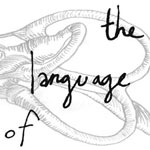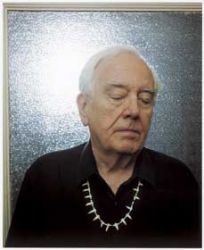Various Artists – the language of
QUIET DESIGN RECORDS
the language of is a compilation CD of ten pieces by eight emerging composers in NYC, many of whom are associated with the Wet Ink Ensemble. Released by Quiet Design Records in Austin, TX, this compilation is a forward-thinking treatise on a constantly evolving new music scene. The production, recording, and design chores were undertaken by the composers and their colleagues, thus comprising a very personalized aesthetic. the language of is an essential purchase, not only for its DIY approach, but because it contains a variety of exciting, well executed compositions. And due to the wobbly legs of the music industry, resourceful composers could do well by using this CD as a business model.
There is an immediacy and yearning to the music featured on this CD. The emotional content (which, of course, varies from piece to piece) is enhanced by the recording techniques used to create the myriad sound-worlds, an approach that is both startling and engaging. There is not one ounce of sonic sterility that one might find on pristinely recorded chamber music CDs. Many of the recording techniques used are in-your-face, close mic’d, compressed, and manipulated to each pieces’ ambient requirements. Some of the pieces that most represent traditional chamber music are ambient mic’d, a representation that provides a bird’s-ear-view (sorry about that one) for the listener, or an aural realism, if you will. The variety of production from piece to piece is therefore more akin to the world of rock, jazz, and experimental music. The packaging, designed by composer Clara Latham, is an attractive and environmentally friendly cardboard cover that features nothing in the form of liner notes (this may be one of my only complaints, but it definitely adds a veil of mystery to the release).
A brief overview of each piece follows after the break: (more…)

 Interpretations continues its twentieth season of provocative programming in New York City. Founded and curated by baritone Thomas Buckner in 1989, Interpretations focuses on the relationship between contemporary composers from both jazz and classical backgrounds and their interpreters, whether the composers themselves or performers who specialize in new music. To celebrate, Jerry Bowles has invited the artists involved in this season’s concerts to blog about their Interpretations experiences. Produced in tandem with La Mama ETC and Performing Artservices, the centerpiece of the series this year is a two-week, three opera, 10 performance, mini-retrospective of the recent works of
Interpretations continues its twentieth season of provocative programming in New York City. Founded and curated by baritone Thomas Buckner in 1989, Interpretations focuses on the relationship between contemporary composers from both jazz and classical backgrounds and their interpreters, whether the composers themselves or performers who specialize in new music. To celebrate, Jerry Bowles has invited the artists involved in this season’s concerts to blog about their Interpretations experiences. Produced in tandem with La Mama ETC and Performing Artservices, the centerpiece of the series this year is a two-week, three opera, 10 performance, mini-retrospective of the recent works of  They’ll tell you: Nexsound has been dedicated to the unusual and experimental music, both acoustic and electronic, that could be of any style and trend released on CDs and MP3 files. The term that describes music released by Nexsound best is probably “environmental music”, and it is often like “indocile ambient”. Nexsound music envelops you, listening to it feels like immersing into the very special atmosphere that this music creates, and thus it is intended rather for private listening. We pay the very special attention to the package of CDs released, so they look and feel very nice.
They’ll tell you: Nexsound has been dedicated to the unusual and experimental music, both acoustic and electronic, that could be of any style and trend released on CDs and MP3 files. The term that describes music released by Nexsound best is probably “environmental music”, and it is often like “indocile ambient”. Nexsound music envelops you, listening to it feels like immersing into the very special atmosphere that this music creates, and thus it is intended rather for private listening. We pay the very special attention to the package of CDs released, so they look and feel very nice.
 Some exciting news via e-mail today from our old virtual pal Joseph Waters, godfather of
Some exciting news via e-mail today from our old virtual pal Joseph Waters, godfather of